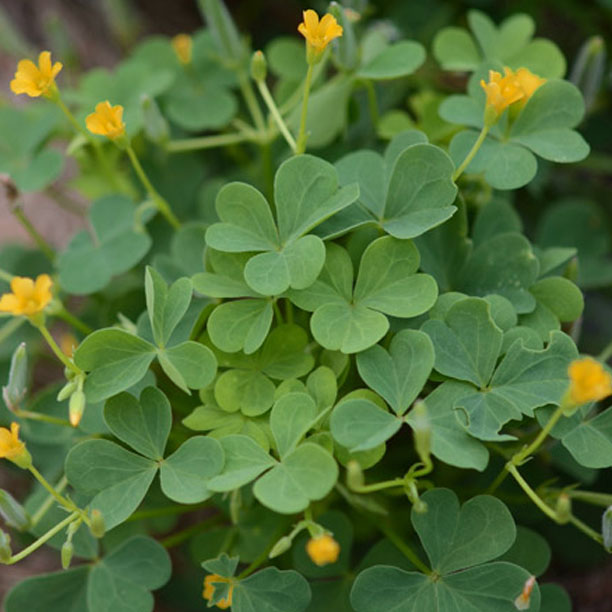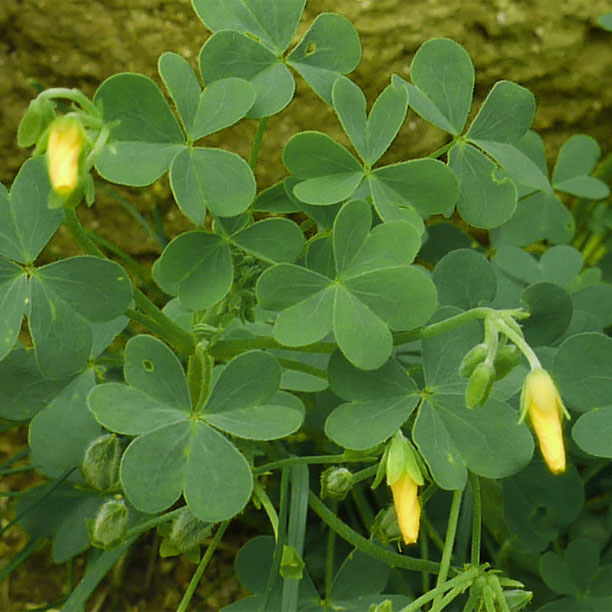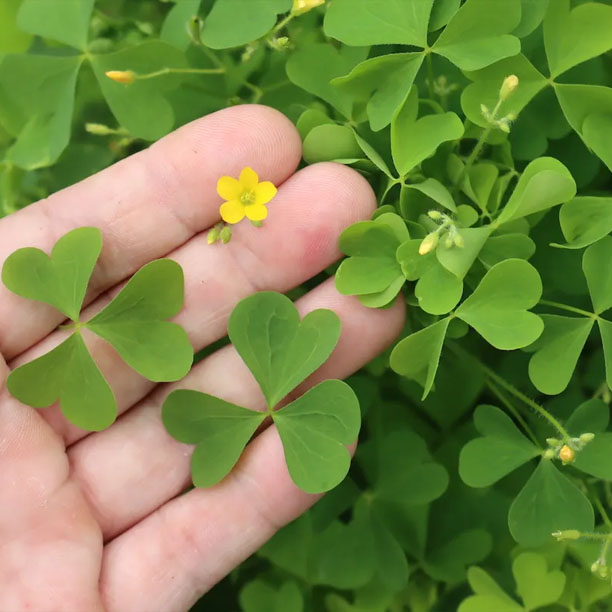Wood Sorrel
How To Identify
Wood sorrel is a perennial plant and is also known as sour grass. Wood sorrel looks similar to clover in shape and is normally a green color but sometimes can be purple or burgundy colored. Though it has the same sorrel name, it is not botanically related to Sheep sorrel. Typically, the plant will reach 8 or 9 inches tall but can grow as high as 15 inches. Each leaf measures ¾ to 1 inch across and is comprised or three heart shaped leaves which are creased along their midvein like a folded heart. The leaflets fold up at night and open during the day. Their five-petaled flowers are normally white or yellow but can be pink or violet depending on species. In the northeast US they bloom spring to fall, but can bloom all year in warm climates.



Benefits
All parts of wood sorrel are edible including leaves, flowers, seed pods, and roots. It is high in vitamin C and has been used to treat scurvy, fevers, urinary infections, mouth sores, nausea and sore throats.
How To Find
Wood sorrel is a considered a common weed that can be found in yards, gardens, and parks and it likes partial shade. It can be found growing along brick or cement walls and along the sides of buildings where it can get some shade and protection during the day.
Gathering
It is recommended to only gather a portion of the wood sorrel from any given area as a responsible form of foraging to allow continued growth. Only picking half the leaves from each plant allows the plant to survive and provide future harvests. If the plant is growing in an unwanted area, pulling the whole plant is an option.
How To Use
Wood sorrel is best used fresh. The leaves, flowers, and immature seed pods can be used in salads. It can also be used as a curdling agent in milk to make cheese.
It can be cooked and its lemon-like flavor and goes well with meat and fish as well as many other dishes.
It can also be used fresh or dried in a tea. The water should be brought to a boil, removed from the heat and then add the leaves. It is not recommended to boil the leaves as this will reduce the nutritional benefits.
Preservation
To preserve the leaves, place them into a paper bag, or on a screen (window screen or similar) and allow them to dry in a dry dark place with good airflow. They can also be dehydrated using very low or no heat in a standard dehydrator or freeze dried. Oven drying isn’t recommended as the heat can damage the medicinal benefits.